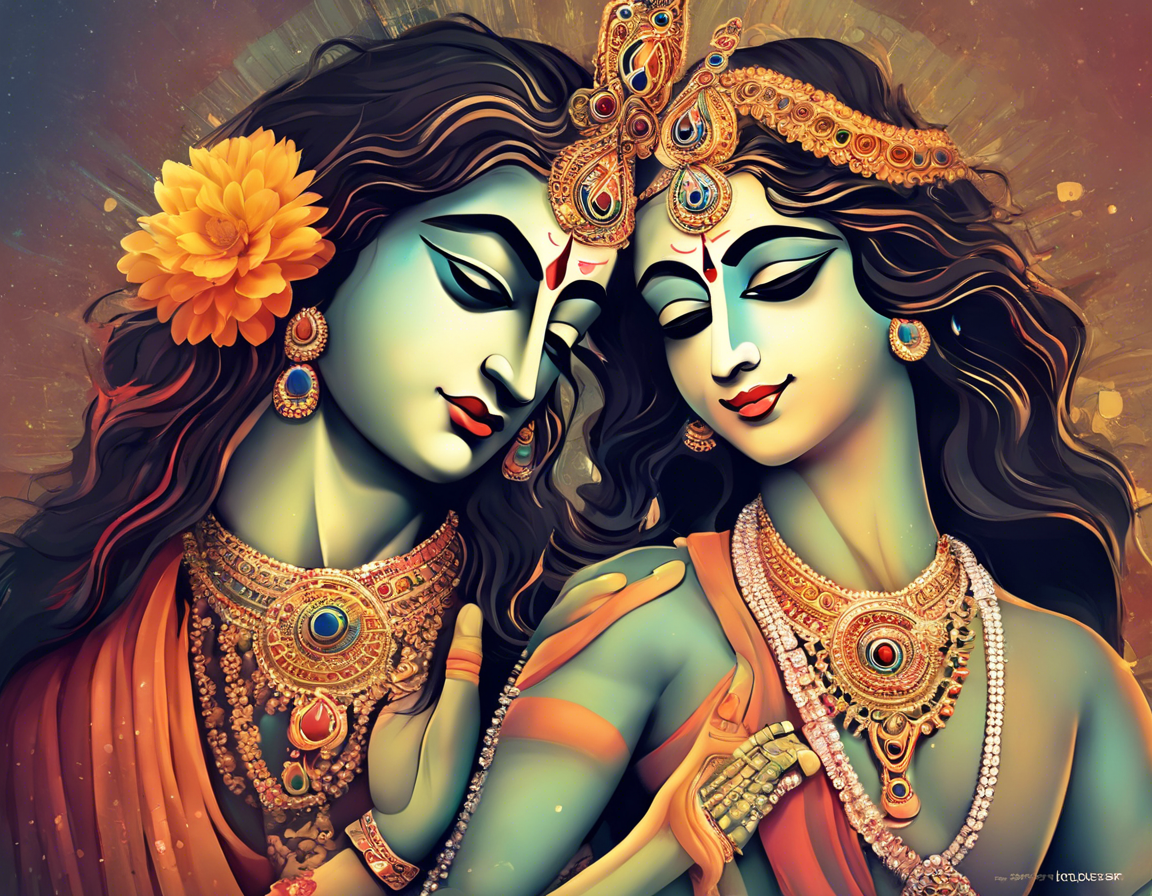Introduction
Radhe Krishna, a beloved union of two divine entities in Hindu mythology, has captivated the hearts and minds of devotees for centuries. This divine connection between Radha and Krishna is symbolic of the eternal bond between the devotee and the divine, teaching profound lessons in love, devotion, and spirituality. Let’s delve deeper into the significance of Radhe Krishna and explore the mystical aspects of their relationship.
The Legend of Radhe Krishna
The love story of Radha and Krishna is deeply rooted in the cultural and spiritual ethos of India. Radha, often portrayed as the embodiment of pure devotion, and Krishna, the playful and enchanting deity, shared a bond that transcended human understanding. Their love is celebrated in various forms of art, literature, and music across the country.
In Hindu mythology, Radha’s selfless love for Krishna symbolizes the yearning of the individual soul for union with the divine. It is believed that Radha’s love and devotion towards Krishna were so pure and unconditional that it became the epitome of divine love, known as “prema” in Sanskrit.
Krishna, on the other hand, reciprocated Radha’s love with his enchanting presence and playful antics, symbolizing the divine’s affection towards his devotees. Their eternal love story is often interpreted as a metaphor for the union of the individual soul (Atman) with the universal consciousness (Brahman).
Philosophical Underpinnings
The relationship between Radha and Krishna goes beyond romantic love; it exemplifies the deeper spiritual connection between the devotee and the divine. Radha represents the pinnacle of devotion (bhakti) and selfless love, while Krishna symbolizes the ultimate reality and divine consciousness.
Their union signifies the inseparable bond between the individual self and the universal spirit, where the devotee surrenders completely to the will of the divine, seeking union and communion with the ultimate reality. It teaches us to transcend the barriers of ego, attachment, and desire, and merge with the divine essence through love and devotion.
Symbolism and Iconography
In Hindu iconography, Radha and Krishna are often depicted together in various forms of art, portraying different aspects of their divine relationship. Radha is depicted as a symbol of devotion, purity, and selfless love, adorned with flowers and playing the role of Krishna’s beloved.
Krishna, on the other hand, is portrayed as the charming deity playing the flute, enchanting the hearts of his devotees with his divine melody. Together, they represent the perfect union of love and devotion, illustrating the divine play (leela) of the cosmic consciousness.
Practices and Rituals
Devotees of Radha and Krishna engage in various practices and rituals to strengthen their bond with the divine couple. Bhakti yoga, the path of devotion, is central to this spiritual practice, where devotees express their love and reverence through prayers, songs, and kirtans dedicated to Radha and Krishna.
Radha-Krishna temples are places of worship where devotees gather to offer their prayers and seek blessings from the divine couple. Janmashtami, the birth anniversary of Lord Krishna, and Radhashtami, the appearance day of Radha, are celebrated with great fervor and devotion by devotees around the world.
FAQs (Frequently Asked Questions)
1. Who is Radha in Hindu mythology?
Answer: Radha is a central figure in Hindu mythology, known for her unwavering love and devotion towards Lord Krishna.
2. What is the significance of Radhe Krishna’s love story?
Answer: The love story of Radha and Krishna symbolizes the eternal bond between the devotee and the divine, teaching profound lessons in love, devotion, and spirituality.
3. How can one strengthen their connection with Radhe Krishna?
Answer: Devotees can strengthen their bond with Radhe Krishna through practices such as bhakti yoga, prayers, devotional songs, and regular visits to Radha-Krishna temples.
4. What is the philosophical underpinning of Radhe Krishna’s relationship?
Answer: The relationship between Radha and Krishna signifies the inseparable bond between the individual self and the universal spirit, teaching us to transcend ego, attachment, and desire through love and devotion.
5. How are Radha and Krishna depicted in Hindu iconography?
Answer: Radha is depicted as a symbol of devotion and selfless love, while Krishna is portrayed as the charming deity playing the flute, together representing the perfect union of love and devotion.
Conclusion
The divine connection between Radha and Krishna serves as a guiding light for devotees on the path of love and devotion towards the divine. Their eternal love story transcends time and space, inspiring millions to seek union with the ultimate reality through pure devotion and selfless love. May the divine bond of Radhe Krishna continue to illuminate the hearts and minds of seekers on their spiritual journey.
